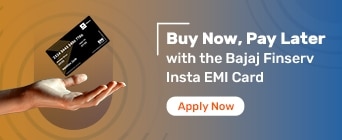Whether you want something simple and familiar or a phone with the latest features, Apple offers a range of options. The iPhone SE and iPhone 14 cater to different needs, you may choose depending on which features suit your preferences best.
The iPhone SE keeps things compact with its classic Home button and could deliver solid speed with the A15 Bionic chip. In contrast, the iPhone 14 might bring a larger display, a sleeker look with thinner bezels, and an upgraded camera system for sharper photos. Both run smoothly for daily tasks, but offer different experiences in terms of style and features.
The choice between iPhone SE vs iPhone 14 depends on which fits your needs best. Explore the differences in their design, camera, and performance to help you decide which one matches your needs better.
When comparing the iPhone SE vs iPhone 14, their core specifications show key differences in display, camera, and battery. One might offer a blend of modern features and performance, while the other could deliver essential features in a compact, budget-friendly design. Here’s how they compare:
Feature |
iPhone SE (3rd Gen) |
iPhone 14 |
Display |
Retina HD display, 4.7-inch, with True Tone, 625 nits max brightness typical. |
Super Retina XDR display, 6.1-inch, with HDR, 800 nits max brightness typical. |
Body/Design |
Aluminium body with glass front and back. |
Aluminium design with Ceramic Shield front and glass back. |
Cameras Available |
12MP Main single camera (ƒ/1.8), 7MP front camera. Standard Smart HDR 4 and Deep Fusion. |
12MP Main (ƒ/1.5) and Ultra Wide (ƒ/2.4), 12MP TrueDepth, Photonic Engine, Night mode. |
Chip and Core |
A15 Bionic chip with 6-core CPU, 4-core GPU, and 16-core Neural Engine. |
A15 Bionic chip with 6-core CPU, 5-core GPU, and 16-core Neural Engine. |
Battery Life (Video playback) |
Up to 15 hours. |
Up to 20 hours. |
Safety Features |
Emergency SOS (Crash Detection not supported). |
Emergency SOS and Roadside Assistance via satellite, Crash Detection available. |
Operating System |
iOS 15, supports core iOS features and regular updates. |
iOS 16, supports latest features like Lock Screen customisation, Live Text, etc. |
The iPhone 14 could suit those who want better cameras, a larger screen, and longer battery life. Meanwhile, the iPhone SE (3rd Gen) might be ideal for users looking for solid performance in a smaller, budget-friendly design.
The iPhone SE vs 14 slightly differ in their designs. The iPhone SE retains the classic look with a home button and thick bezels, ideal for those who prefer a compact phone. Its body is made of aerospace-grade aluminium and glass. In contrast, the iPhone 14 offers a sleek, all-screen build with Face ID. If you want a larger, more modern-looking phone, the iPhone 14 vs iPhone SE decision might tilt towards the iPhone 14.
Design Features |
iPhone SE (3rd Gen) |
iPhone 14 |
Frame Material |
Aerospace-grade aluminium |
Aerospace-grade aluminium |
Front Protection |
Toughened glass |
Ceramic Shield |
Bezels and Display |
Thick bezels with Home Button |
Slim bezels with Face ID notch |
Finish/Colours |
Midnight, Starlight and (PRODUCT) RED |
Midnight, Starlight, Blue, Purple, (PRODUCT) RED |
Water Resistance (IEC standard 60529) |
IP67 (up to 1m for 30 minutes) |
IP68 (up to 6m for 30 minutes) |
Weight |
144 grams |
172 grams |
If you want a bigger display, edge-to-edge design, and features like Face ID and Dynamic Island, the iPhone 14 could be the better pick. But if you prefer a compact size, a Home Button, and a phone that’s light and easy to handle, the iPhone SE (3rd Gen) might suit you more.
When it comes to the iPhone SE vs iPhone 14 camera comparison, both phones could be suitable options for different users. The iPhone 14 comes with Night mode, ultra-wide shots, and better zoom, while the iPhone SE keeps it simple for everyday photos.
Camera Feature |
iPhone SE (3rd Gen) |
iPhone 14 |
Main Camera |
12MP, ƒ/1.8 aperture |
12MP, ƒ/1.5 aperture |
Ultra Wide Camera |
Not available |
12MP, ƒ/2.4 aperture |
Zoom Range (Optical) |
1x zoom |
.5x and 1x zoom |
Zoom Range (Digital) |
Up to 5x digital zoom |
Up to 5x digital zoom |
Image Stabilisation |
Optical image stabilisation |
Sensor-shift optical image stabilisation |
Flash |
True Tone flash with Slow Sync |
True Tone flash |
Photonic Engine |
Not available |
Available |
Portrait Mode |
With Depth Control and 6 Portrait Lighting effects |
With Focus plus Depth Control and 6 Portrait Lighting effects |
Night Mode |
Not available |
Available on both cameras |
The iPhone 14 offers dual cameras, Night mode, and ultra-wide shots, while the iPhone SE has a single camera without Night mode or any ultra-wide feature. If you need extra features like low-light photography or wider shots, the iPhone 14 could be considered.
Both iPhones are powered by the A15 Bionic chip, but the iPhone 14 comes with a 5-core GPU, offering better graphics performance. It also delivers longer battery life, making it more suitable for heavy users. The iPhone SE, on the other hand, handles everyday tasks well and may appeal to users who prefer a compact device with reliable performance.
Feature |
iPhone SE (3rd Gen) |
iPhone 14 |
Chipset |
A15 Bionic with 6-core CPU and 4-core GPU |
A15 Bionic with 6-core CPU and 5-core GPU |
Capacity (Mid-range) |
128GB |
256GB |
Video Playback |
Up to 15 hours |
Up to 20 hours |
Video (Streamed) |
Up to 10 hours |
Up to 16 hours |
Audio Playback |
Up to 50 hours |
Up to 80 hours |
Fast Charging (20W adapter) |
Up to 50% in 30 mins |
Up to 50% in 30 mins |
Wireless Charging |
Qi compatible |
Qi compatible, charging up to 7.5W |
Charging Port |
Lightning, supports USB-2 |
Lightning, supports USB-2 |
In the iPhone SE vs 14 comparison, the iPhone 14 stands out for its enhanced battery life and stronger graphics. If you stream, game, or multitask frequently, it could be a more suitable choice. The iPhone SE still delivers consistent performance, especially for light to moderate use.
In the iPhone SE vs iPhone 14 comparison, iPhone 14 might include a richer set of features. It offers newer innovations like Dynamic Island, Always-On Display, and smoother refresh rates. Face ID could add to the convenience, while advanced safety features like Emergency SOS via Satellite provide extra peace of mind. The iPhone SE focuses on delivering core iOS functionality with a straightforward experience. With Touch ID and a compact design, it might still remain a reliable choice for users who prefer simplicity and familiarity.
Feature |
iPhone SE (3rd Gen) |
iPhone 14 |
Dynamic Island |
Not available |
Available |
Always-On Display |
Not available |
Available |
Face ID / Touch ID |
Touch ID |
Face ID |
Crash Detection and Emergency SOS via Satellite |
Not available, Supports standard Emergency SOS |
Crash Detection, Emergency SOS via Satellite in select regions |
iOS Version |
Integrated with iOS 15 |
Integrated with iOS 16 |
Software Longevity |
Expected to receive updates, though possibly for fewer years |
Likely to receive updates for more years |
Exclusive Features |
Runs standard iOS features without hardware-based enhancements |
Enhanced with hardware-driven features (e.g. Live Activities, ProMotion) |
If you are looking for cutting-edge features like Dynamic Island, Always-On Display, and Face ID, the iPhone 14 might offer a more premium experience. The iPhone SE, while missing these enhancements, could still deliver core iOS features with a simpler interface and reliable Touch ID. In the iPhone SE vs iPhone 14 comparison, the iPhone 14 might cater to those who prioritise the latest features and long-term software support, while the iPhone SE may appeal to users who prefer a simple experience with essential iOS functionality.
The iPhone 14 may be positioned as a more premium option and is priced around ₹52,500. In contrast, the iPhone SE (3rd Gen) is available for about ₹47,500, making it a more budget-friendly entry into the Apple lineup.
Price often plays a key role when choosing between the iPhone SE and iPhone 14. If you're looking for an affordable iPhone with dependable performance and Touch ID, the SE may offer excellent value. However, if you prefer a modern design, improved camera system, and longer software support, the iPhone 14 could justify the higher cost.
If you want a compact, budget-friendly phone with solid performance, the iPhone SE could be a suitable choice. It’s perfect for those who prefer Touch ID and a smaller screen. However, if you want better cameras, longer battery, and modern features like Face ID and MagSafe, the iPhone 14 could be worth the extra cost.
If you value design, photography, and longer battery life, then the iPhone 14 could be worth the extra cost. But for basic use and day-to-day performance, the iPhone SE might still deliver excellent value. In the iPhone 14 vs SE debate, your choice might depend on the kind of performance you require from your phone.
Once you’ve picked between the iPhone SE and iPhone 14, the Bajaj Finserv Insta EMI Card could simplify your purchase with flexible payment options:
Convert the iPhone price into manageable EMIs
Enjoy zero down payment on select variants and stores
No credit card or lengthy approval process needed
Pick a repayment tenure that suits your finances
Instantly use your pre-approved limit online or at partner stores
Whether you go for the iPhone 14 or iPhone SE, the Insta EMI Card might help you own it without paying the full amount upfront.
Related to Bajaj Finserv EMI Network Card
- EMI Card
- Bajaj Finserv EMI Network Card Login
- Bajaj Customer Portal
- Apply for Bajaj Finserv Insta EMI Card
- Eligibility For Bajaj Finserv EMI Network Card
- Bajaj Finserv EMI Network Card Benefits
- Bajaj Finserv EMI Network Card Charges
- Bajaj Finserv EMI Network Card Offers
- Bajaj Finserv Partner Stores
- No Cost EMI
- EMI Without Credit Card
- EMI Card VS Credit Card
- Bajaj Finserv EMI Network Card Accepted Shops
- Check EMI Network Card Details
- Bajaj Finserv EMI Network Card Statement
- Bajaj Finserv EMI Network Card Cash Withdrawals
- Bajaj Finserv EMI Network Card Limit
- Bajaj Finserv EMI Network Card Status
- EMI Network Card FAQs
- Unblock EMI Network Card
- Interest on EMI Network Card
Manage your EMI Network Card
- How to Activate Bajaj Finserv EMI Network Card?
- How to Increase Bajaj Finserv EMI Network Card Limit?
- How to Use Bajaj Finserv EMI Network Card?
- How to get Bajaj Finserv EMI Network Card number?
- How to Check EMI Network Card Balance?
- How to Change the Bajaj Finserv EMI Network Card Pin?
- How to Get the Bajaj Finserv EMI Network Card Pin?
- How to Change the Registered Bajaj Finserv EMI Network Card Phone Number?
- How to Check the Bajaj Finserv EMI Network Card CVV Online?
- How Does No Cost EMI Work?
- No Cost EMI at Amazon
- No Cost EMI At @Home
- No Cost EMI at Flipkart
- No Cost EMI Goibibo
- No Cost EMI at Hometown
- No Cost EMI at MMT
- No Cost EMI at Xiaomi
- No Cost EMI at Oneplus
- No Cost EMI at Oppo
- No Cost EMI at PayTm
- No Cost EMI at Pepperfry
- No Cost EMI at Realme
- No Cost EMI at Samsung
- No Cost EMI at Vivo
- No Cost EMI at Yatra
Shop for products on EMI
- Laptops on EMI
- Mobile on EMI
- iPhone on EMI
- AC on EMI
- Cycle on EMI
- Furniture on EMI
- HP Laptop on EMI
- iPhone 13 on EMI
- TV on EMI
- Dell Laptop on EMI
- Inverter on EMI
- Washing Machine on EMI
- Camera on EMI
- Flight Tickets on EMI
- Computer on EMI
- iPad on EMI
- Electronics on EMI
- Macbook on EMI
- Refrigerator on EMI
- Modular Kitchen on EMI
- Printer on EMI
- Sofa on EMI
- Travel on EMI
- Macbook Air on EMI
- Tour Packages on EMI
- Tyre on EMI
- Apple Watch on EMI
- Iphone XR on EMI
Frequently Asked Questions
What are the major differences between iPhone SE and iPhone 14?
There are quite a few differences between the two iPhones. The iPhone 14 has a larger display, dual rear cameras, better battery life, and features like Face ID, while the iPhone SE has a compact design, a single camera, and uses Touch ID.
Is the iPhone 14 worth the higher cost compared to the iPhone SE?
The iPhone 14 might offer more advanced features such as improved cameras, longer battery life, and safety upgrades, it could justify its price if you value these aspects. If you need only essential features, the SE may be a good option.
Is the iPhone 14's battery life significantly better than the iPhone SE?
Yes, the iPhone 14 offers about 5 hours more video playback time than the iPhone SE, making it more suitable for longer use between charges.
How does the display quality of the iPhone 14 compare to the iPhone SE?
The iPhone 14 features a larger display with better colour accuracy, contrast, and brightness. The iPhone SE has a smaller display, which might be less vibrant in comparison.
Are there any new features in the iPhone 14 not available in the iPhone SE?
Yes, the iPhone 14 includes features like Night Mode, Crash Detection, Emergency SOS via satellite, and MagSafe support, which are not available in the iPhone SE.
Is the iPhone 14 worth the upgrade from the iPhone SE?
If you prefer a larger screen, enhanced cameras, and newer features, the iPhone 14 could be a worthwhile upgrade. If your current usage is basic, the iPhone SE could meet your requirements.





